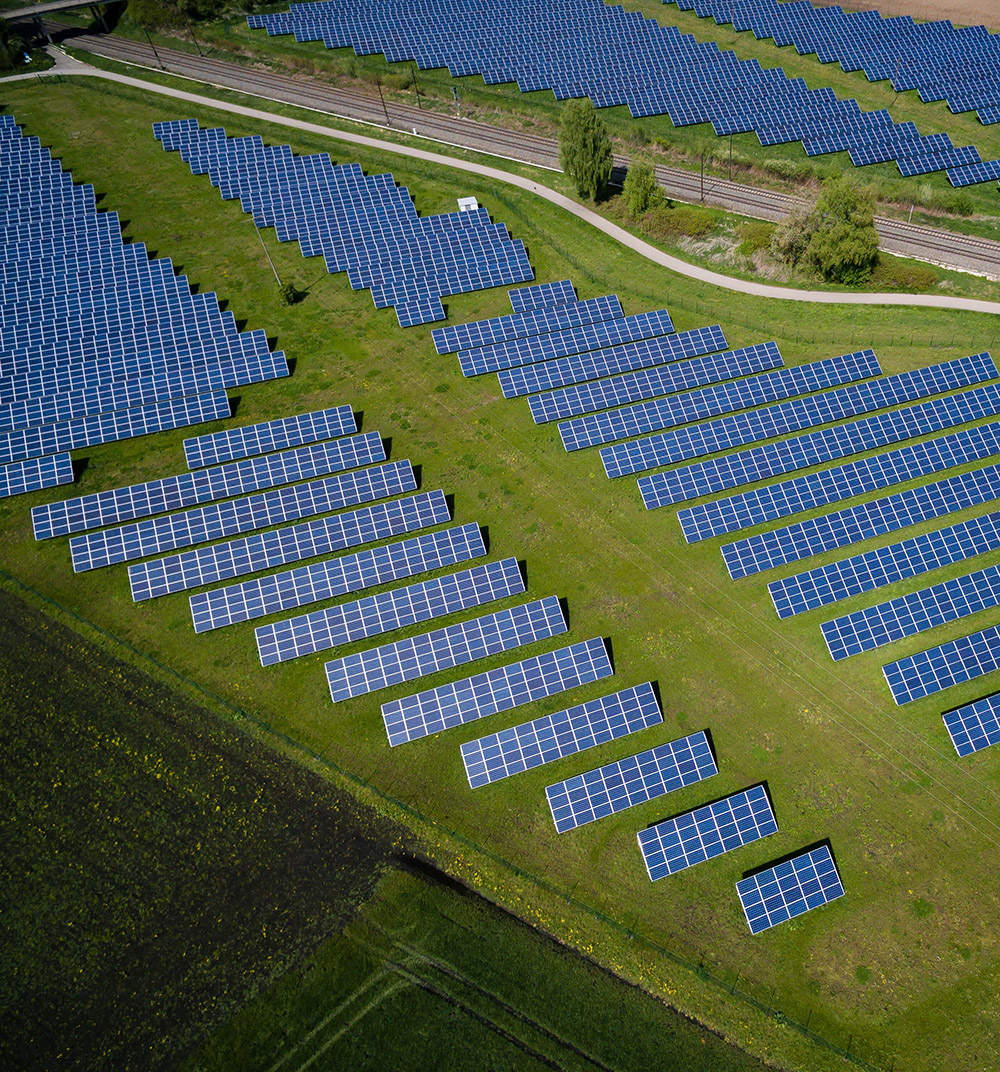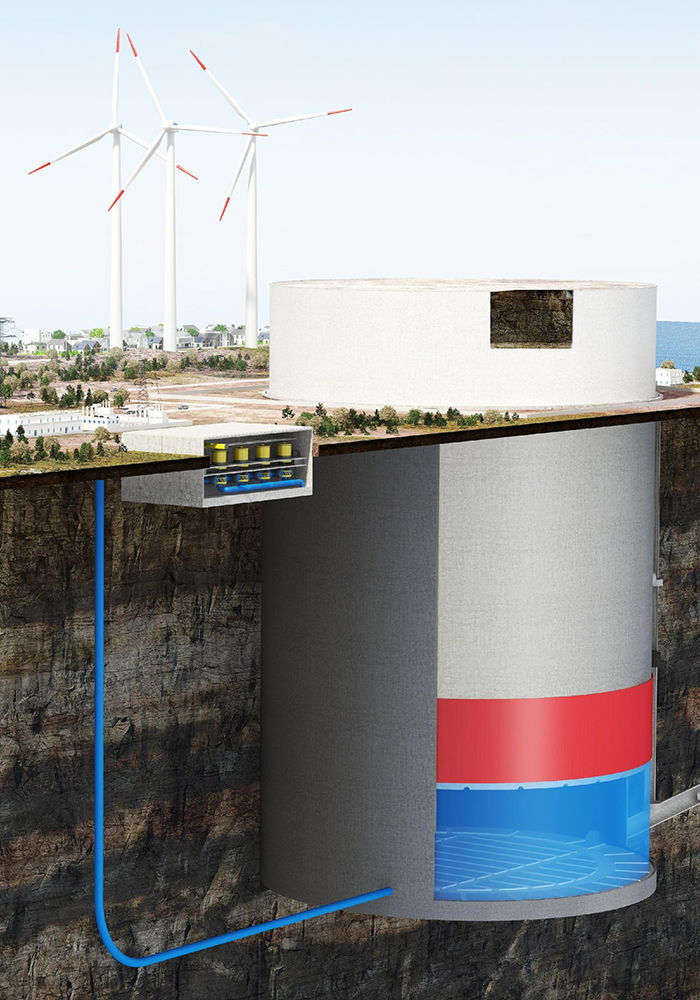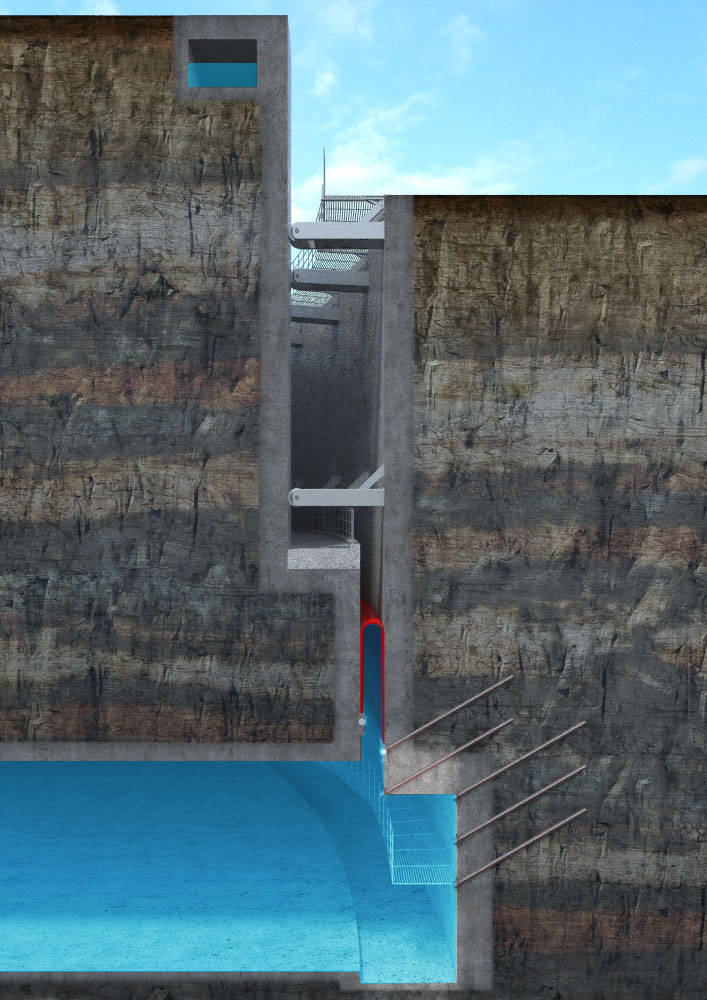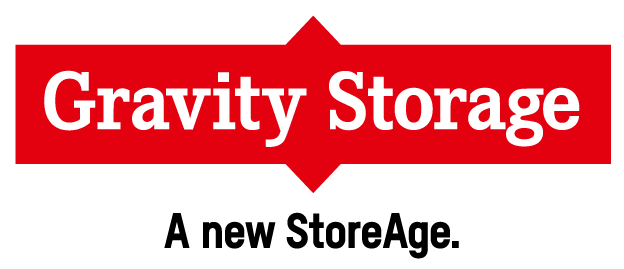A new solution for large scale energy storage

Investing in the Future of Energy Storage
The worldwide rapid construction of fluctuating renewable energy sources, such as wind and solar energy, has created an increasing demand for storing large quantities of energy at low costs. Further, energy security and independence is on top of government agenda. To sustain an uninterrupted supply of energy in a grid system dominated by renewable energy sources, there must be substantially larger storage capabilities than available today to cover long periods of little or no wind, and reduced periods of sunshine.
“… modeling suggests that Long Duration Energy Storage has the potential to deploy 1.5 to 2.5 terawatts (TW) power capacity—or 8 to 15 times the total storage capacity deployed today – globally by 2040. Likewise, it could deploy 85 to 140 terawatt-hours (TWh) of energy capacity by 2040 and store up to 10 percent of all electricity consumed. This corresponds to a cumulative investment of USD 1.5 trillion to USD 3 trillion and to potential value creation of USD 1.3 trillion by 2040.”
Net-zero power – Long duration energy storage for a renewable grid, a report by LDED Council and McKinsey and Company, 2021
Technical Concept
Simple, clever and durable: The technical concept of Gravity Storage uses the gravitational power of a huge mass of rock. It will store electricity of large capacity between 0,5 and 10 GWh and will close the gap between renewable energy production and 24/7 supply with zero carbon electricity: cost-efficient,
at giga-scale, environmentally friendly.
This game-changing technology meets all challenges of our times:
- Makes renewables a reliable energy source
- Easy to build and to operate
- More resilient against terrorism than any other storage infrastructure
- Uses only little rare raw materials


Construction Concept
Gravity Storage will be built using methods and techniques already known from the mining and tunneling industry. The objective here, however, is not the removal of raw materials (as in mining) or the removal of the stone (as in tunneling), but rather the preservation of the rocks. Gravity Storage requires suitable geological conditions but no elevation difference.
Gravity Storage plants should be located in areas with solid bedrock. The most favorable sites have stable, little-faulted rock such as granite or compact layers of otherwise solid rock material.
Economic Concept
The demand for energy storage will continue to grow strongly in the decades to come – particularly due, in particular, to the following global megatrends in electricity supply:
- Solar and wind energy will become the dominant sources of power supply for a majority of nations. Its roll-out is necessary to fight climate change and to decarbonize electricity production. More and more companies invest in renewables to reduce the carbon footprint of their products and to become climate neutral.
- Nations strive for independency from energy imports which requires storage. Huge support programs in USA and Europe will push for rapid transformation.


An Animation of the Principle of Operation
Have a look at how Gravity Storage works:

Mit dem Laden des Videos akzeptieren Sie die Datenschutzerklärung von Vimeo.
Mehr erfahren

